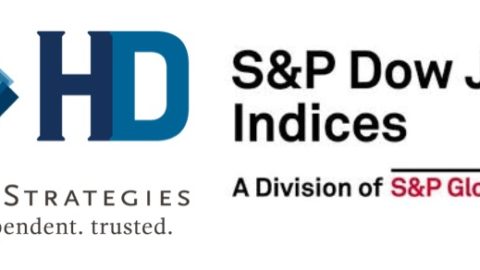Stock Market Shines In the Face of the Storm
Math Versus Fear
By Steven Higgins, Financial Advisor, Principal
We last saw the S&P 500 notch an all-time high on February 19, 2020. By March 23, 2020 the S&P 500 breached the 30% down mark, ultimately finding a bottom at –34%. While not anywhere close to historical in terms of depth, the market drop was by far the fastest 30% correction ever. The sudden onset of the COVID-19 reality brought on a panic fueled by a lack of information and fear. Ranges and expectations of economic and medical outcomes were cataclysmic and jaw-dropping, to say the least. The market had no real information on which to price the values of companies, so it flailed wildly trying to find a bottom, like a panicked swimmer in the dark who wandered unexpectedly into deep water. All the worst case scenarios became baseline scenarios. As the months following the peak chaos of March 2020 have unfolded, we’ve found the economic carnage to be bad, but not as bad as some feared. Let me be clear: the economic toll we see reported everyday is something, the likes of which we’ve never seen before. But there is a story behind the data that provides an explanation that market is seemingly capable of understanding. As we stand nearly three months removed from the market low of March 23, we can claim a sort-of victory over the chaos, if we also understand that our guard must remain up. COVID-19 is not gone, the economic aftermath is still to come, and this is a presidential election year; all is not sunshine in America. Two weeks ago in our post, COVID-19, What’s Next, I compared the first phase of the recovery (the exciting sprint) to the next phase (the grind of the slog). It’s going to be tough and grueling at times, but if history is a guide, it will be a progression forward.
Two reasons why the market may be up in the face of bad economic news:
1- Clarity on Employment Rate
The Headlines Read – WORST UNEMPLOYMENT EVER! Comparisons of the state of unemployment in the U.S. have been made to the Great Depression Era, wherein unemployment was 14% or higher for eight straight years with peak unemployment of over 23% in 1933. After 20 million people filed initial employment claims in April 2020, we saw the unemployment rate skyrocket to 14% from near 4% the previous month.

What the market sees – The CARES Act was passed on Friday, March 27, 2020. One element of the bill was an enhancement to unemployment benefits. Each person claiming unemployment would receive an additional benefit of $600 per week for four months. This provision essentially allowed struggling, shutdown businesses to transfer a significant portion of their payroll to the government. The three weeks following the passage of the bill saw the highest unemployment claims of over 5 million each week. The last 6 weeks have seen a drastic decrease in the amount of initial unemployment claims with last weeks claims totaling about 2 million. The data behind the headlines also reveals the reality that the number of total unemployed dropped last week by four million people. Two million new claims and a decrease of four million total unemployed reveals job “creation” of six million, a huge number. Essentially the U.S. is showing the ability to re-create the jobs as fast as we were losing them just two months ago. Some estimates in April were projecting unemployment near 25%. An April 23rd CNBC article “An Unemployment Rate of 23%? The Real Jobless Picture is Coming Together” projected an unemployment rate of 23% and makes a case for the comparison to the Great Depression. However, Federal Reserve’s annualReport on the Economic Well-Being of U.S. Households showed that 9/10 of those who were laid off through April were still connected to their employer and were told to expect to return.

After April, the U.S unemployment rate was 14.7%. With May numbers yet to be finalized, it’s realistic to imagine the number will be in the neighborhood of 20%. With initial claims since March now totaling 41 million and the continuing unemployment claims at 21 million and declining weekly by the millions, we can see there is a good chance the worst of the unemployment is behind us. Let’s return to the comparison to the Great Depression that fueled the headlines, fear, and market chaos: The Great Depression saw eight straight years of 14% unemployment. Unless something changes dramatically for the worse, the COVID-19 economic crisis might see a few months of 14%+ unemployment. Bad? Yes. Great Depression type reality? No.
2- Gross Domestic Product (GDP) Math vs. Fear
The Headlines Read – GDP Could Decline by 52.8% in the Second Quarter. On June 2nd, the Atlanta Fed’s GDPNow tracker indicated a 52.8% drop in 2Q20 GDP. Goldman Sachs sees a 39% drop and the New York Fed’s survey is indicating a 31%. By any historical comparison, these numbers are outrageous. In comparison, the entire “Great Recession” Q4 2007-Q2 2009 the GDP dropped by a total of 4.2% (U.S. Federal Reserve) On its face, if that comparison doesn’t scare the economic crap of you, then you are certifiably stone cold.

What the market sees – Now, GDP percentages are often used to manipulate headlines and emotions. If I asked 10 random people how GDP numbers are reported 9.8 of them wouldn’t know. If you’re willing to hang with me for a few mins, you’ll never again be tricked by a GDP fear headline. Here we go….
Gross Domestic Product (GDP) is the monetary value of all finished goods and services made within a given time (Investopedia.com). The number is an annualized number reported quarterly. So let’s take the Atlanta Federal Reserve’s headline grabbing, horrible expectation of a drop in GPD of -52.8% for the second quarter of 2020 (April 1-June 30). The Atlanta Fed is not saying what the headline wants you to believe; that the economy was almost cut in half in 3 months. A -52.8% annual drop, for the sake of simplicity is a quarterly drop of about 13.2% (52.8/4=13.2). Let’s stop there for a moment. You’re telling me that the worst case scenario is that in the midst of a total national and developed world shutdown, we were still 86.8 productive? If you’re looking for a bright spot, there you go. Continuing…. Obviously if we shut things down, there’s going to be a drop in productivity and subsequently GDP. All expectations are that in the second half of 2020 we will see a recovery as the nation continues to open back up. As we re-open there will be an increase in GDP. Increases to GDP are also reported quarterly as an annualized number and use the base, the new lower number as the starting point. If we combine the drop in GDP from the first quarter of 2020 (-4.8% annualized, 1.2% actual) with the the Atlanta Fed’s dire prediction we’d have a total decline of GDP though the first half of 2020 of 14.4%. “Turning the lights back on” should spark an immediate reaction in terms of GDP growth response. As reported on BusinessInsider.com on May 13th, Goldman Sachs revised their Q3 GDP forecast to an increase of 29% (29/4 = 7.25 actual GDP growth). In other words, Goldman Sachs sees over half of the economic devastation recovered in a matter of months. If the recovery were to persist at just 5% (annual rate), it would take about a year for a full recovery.
Possible Recovery Times Assuming Atlanta Fed’s GDPNow Tracker Anticipated Drop in Gross Domestic Product for Q2 2020 -52.8% (-13.2% actual)
| Quarterly Annualized Rate During Recovery | Months To Full Recovery |
| 3% | 18 |
| 5% | 11 |
| 7% | 8 |
The stock market is pricing in the future, not what’s happening today. The headlines simply can’t stand up to the math and time has a way of proving that “math wins.” One or two quarters of GDP destruction are quickly absorbed by a series of decent quarters of recovery. Are the GDP numbers in front of us jarring? Yes. Armageddon? No. Manageable? Yes.
Conclusion
COVID-19 has clearly defined 2020. We’ve all had to balance the medical, economic, emotional, and social challenges. The lack of discernible information at times made it challenging to consider sensible decisions and if we are being honest, the political environment isn’t helping. The truth is, history is on your side. Markets, in the short term go up and down for all kinds of reasons. As mentioned before the COVID-19 market volatility event was historically fast, but nowhere close to historically deep. In the moment, the collective drum of “this time is different” was deafening and so far, as with every single other instance in modern history, it was wrong. Investors who worked with advisors who had a plan and a process have managed the storm and are prepared to work through the rest of the recovery. Every long term chart shows us that every bull market or economic expansion is preceded by a bear market or recession, but when you’re experiencing the rough times it certainly doesn’t feel like a launch pad…but unless, “this time is different”…it is.
*Financial data provided by Y Charts.
The opinions voiced in this material are for general information only and are not intended to provide specific advice or recommendations for any individual. All performance referenced is historical and is no guarantee of future results. All indices are unmanaged and may not be invested into directly. The economic forecasts set forth in this material may not develop as predicted and there can be no guarantee that strategies promoted will be successful.
Stock investing involves risk including loss of principal.







